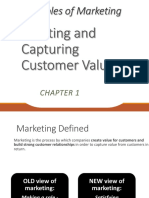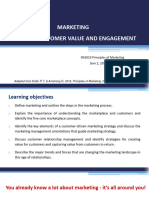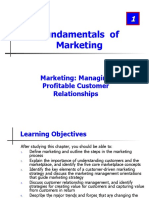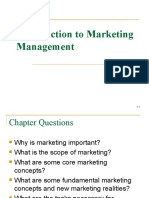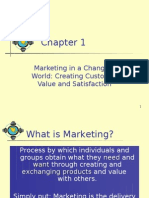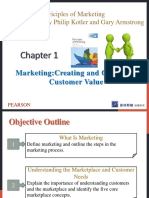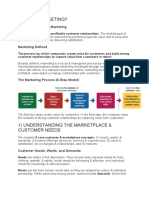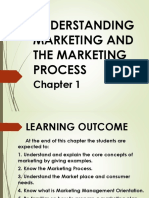0% found this document useful (0 votes)
31 views5 pagesChapter 1 Notes
Chapter One introduces marketing as the management of profitable customer relationships, emphasizing the importance of understanding customer needs and delivering satisfaction. It outlines the marketing process, including defining target markets and crafting value propositions, while discussing trends shaping the marketing landscape. Key concepts such as customer relationship management, customer satisfaction, and the impact of technology on marketing are also highlighted.
Uploaded by
rafidmahbub2004Copyright
© © All Rights Reserved
We take content rights seriously. If you suspect this is your content, claim it here.
Available Formats
Download as PDF, TXT or read online on Scribd
0% found this document useful (0 votes)
31 views5 pagesChapter 1 Notes
Chapter One introduces marketing as the management of profitable customer relationships, emphasizing the importance of understanding customer needs and delivering satisfaction. It outlines the marketing process, including defining target markets and crafting value propositions, while discussing trends shaping the marketing landscape. Key concepts such as customer relationship management, customer satisfaction, and the impact of technology on marketing are also highlighted.
Uploaded by
rafidmahbub2004Copyright
© © All Rights Reserved
We take content rights seriously. If you suspect this is your content, claim it here.
Available Formats
Download as PDF, TXT or read online on Scribd
/ 5


